What species of amphibians are thriving in the Pacific Northwest? One way to find out is to locate and identify their egg masses, and March is a perfect month to get outside and search.
A 4-acre wetland mitigation site in a behind-the-scenes area of Northwest Trek is where this search frequently occurs. “This is an ideal place for monitoring egg masses,“ says Northwest Trek’s Conservation Program Coordinator Rachael. “Since the wetland’s restoration, we’ve identified eggs from seven of the eight monitored species of stillwater-breeding amphibians.”
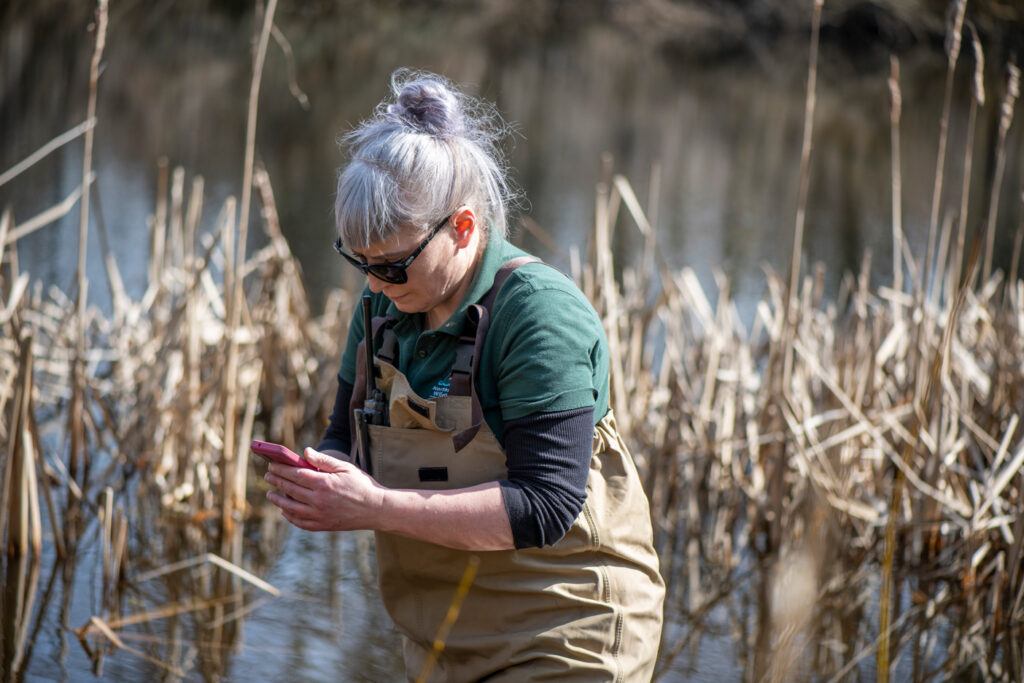
From previous years, we know the first few weeks of March are typically the best time to find various egg masses. However, this year, we experienced a number of cold nights leading up to breeding that may impact the number of egg masses we find.
Differentiating Egg Masses
You will commonly find egg masses of four species around Northwest Trek in mid-March: the northwestern salamander, Pacific treefrog, northern red-legged frog and long-toed salamander.
As we search around the first pond at the mitigation site, Rachael gives us a clue: “As you scan the waters, look for an unusual shape, something transparent or translucent, and often attached to vegetation.”
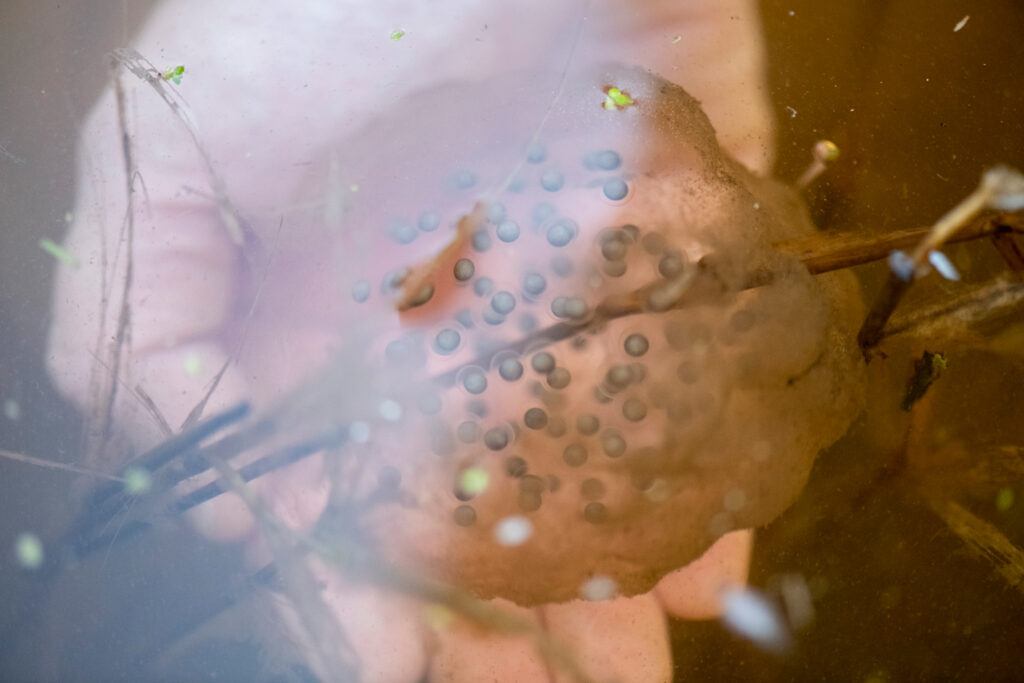
After a few minutes in the water, we find our first egg mass! That of the northwestern salamander submerged a few inches underwater and attached to a twig. We get closer and carefully feel the egg mass. It’s slightly gelatinous, but you can feel its firmness with a delicate squeeze.
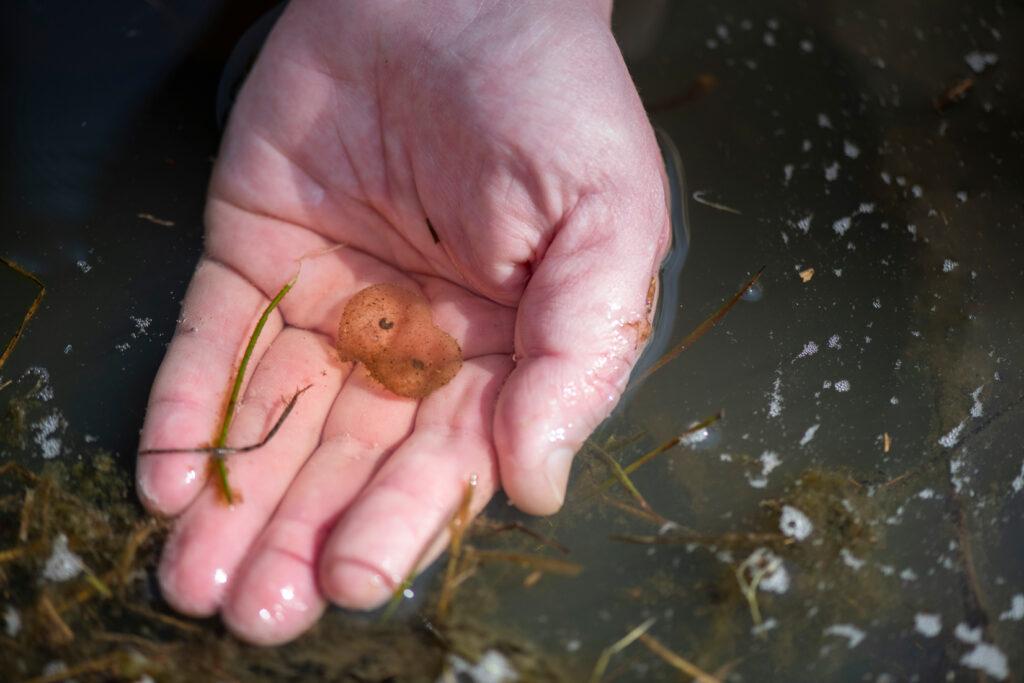
We move away from the first pond and make our way into the next pond. It’s not too long before we locate long-toed salamander eggs. Right away, we notice each egg already developing into the shape of a salamander larvae and having more of a dark brown color. Rachael explains, “The long-toed salamander eggs have small packets and sometimes will only have a single egg per packet.” As they develop, they begin to resemble the shape of a comma.
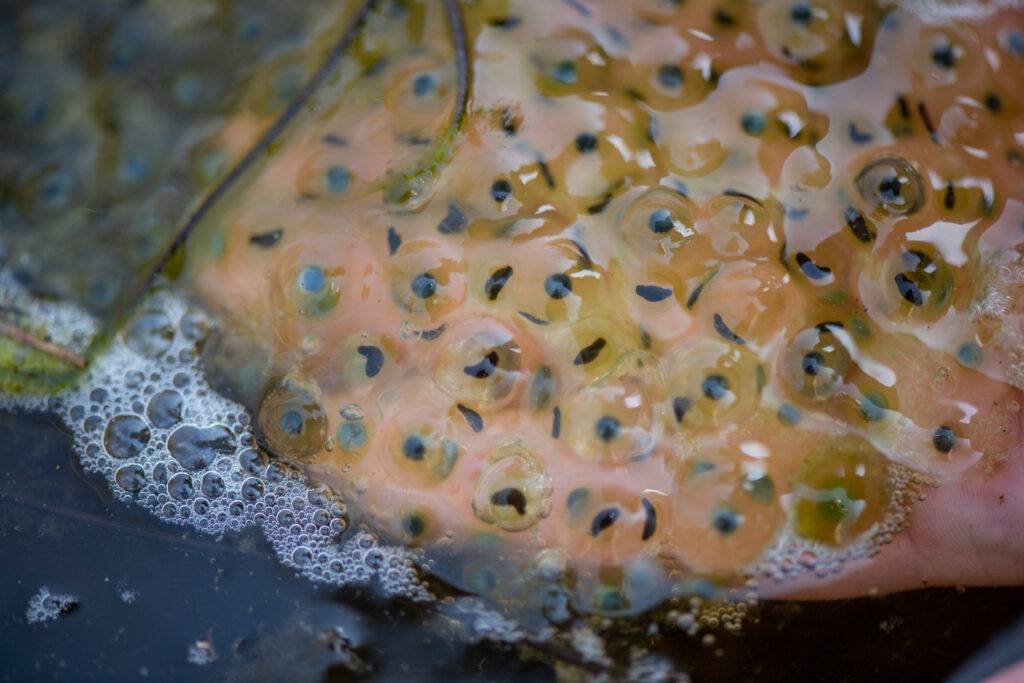
During our search, we located one mass of the northern reg-legged frog. Rachael tells us that the egg masses of this species have more of a grape cluster appearance with soft jelly. Often, they will drift off from the vegetation where they were initially laid and float to the surface of a pond before hatching.
As we keep exploring, we’re discovering how the weather has in fact impacted our search. The colder temperatures lingering into March this year mean there are no Pacific treefrog eggs – yet. Pacific treefrog egg masses are much smaller than those of the northwestern salamander. They’re packed together tightly and have only a thin layer of jelly. You might notice how closely they resemble a miniature galaxy.
As we wrap up our search, Rachael lets us know there are many reasons to return. In a few weeks, many of the egg masses we saw today should hatch and the tadpoles will leave their masses. Also, she expects western toad eggs to be visible in April or May.
Monitoring amphibian egg masses – and training others to do it – is something Northwest Trek has been doing since 2011. Amphibian egg mass monitoring could be a matter of life or death for some species. The Oregon spotted frog is endangered in Washington, and threatened U.S.-wide. It’s the only monitored species so far not spotted at Northwest Trek.
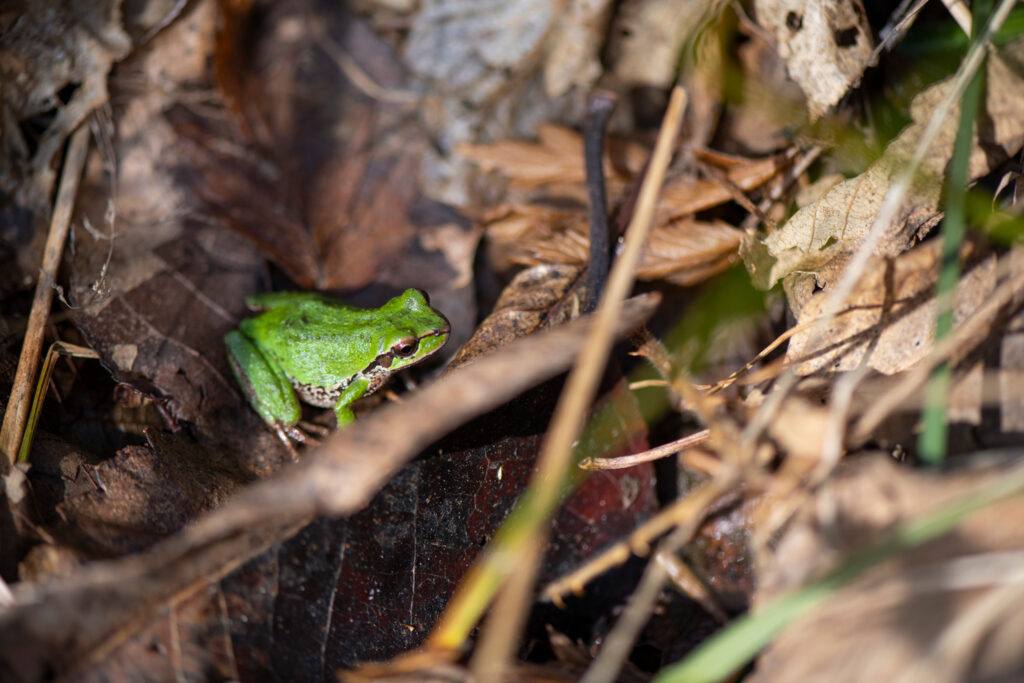
Learn how to observe and inventory local habitats; then collect data to help scientists make decisions to help local wildlife. Learn more about community science opportunities.